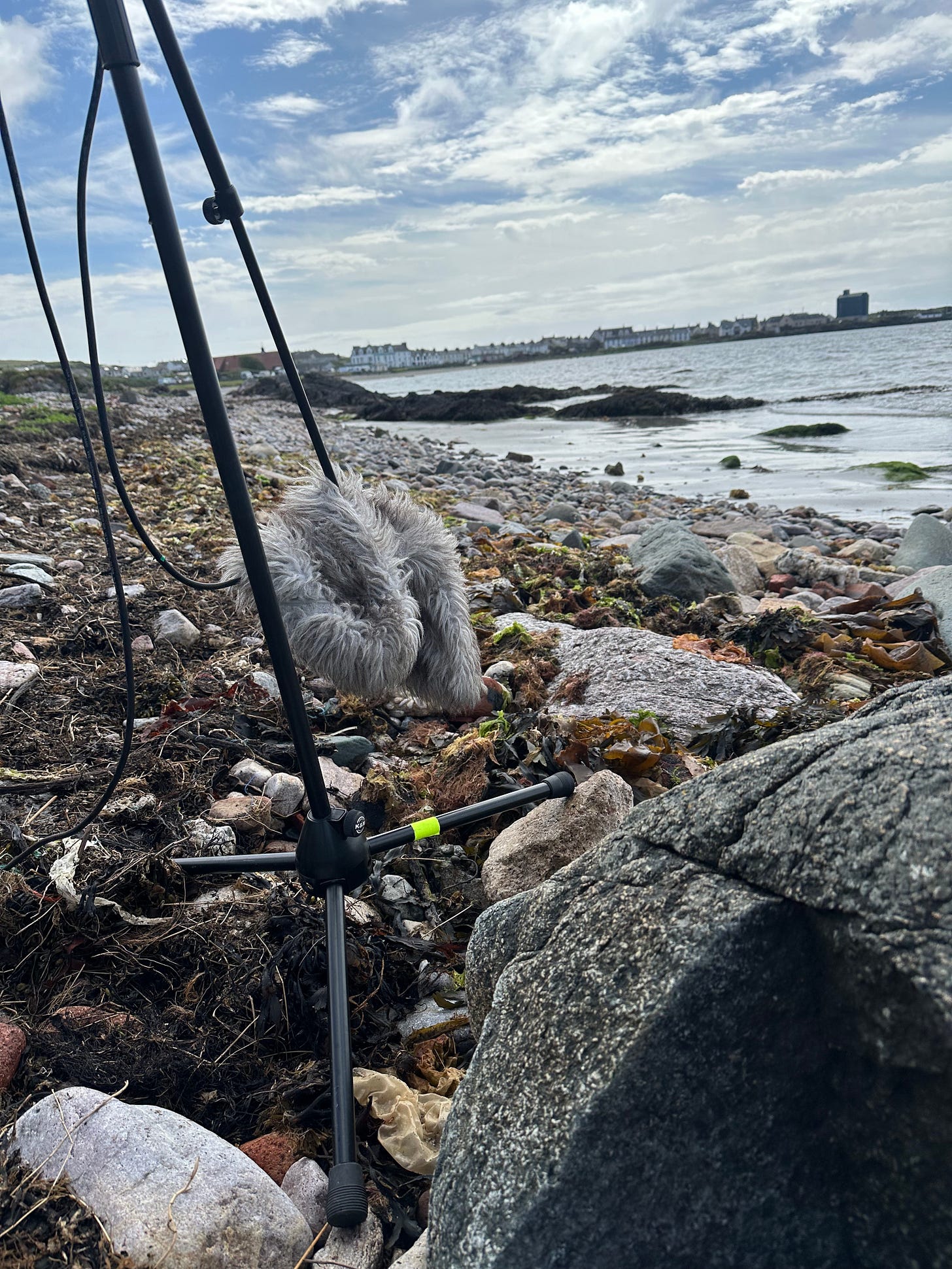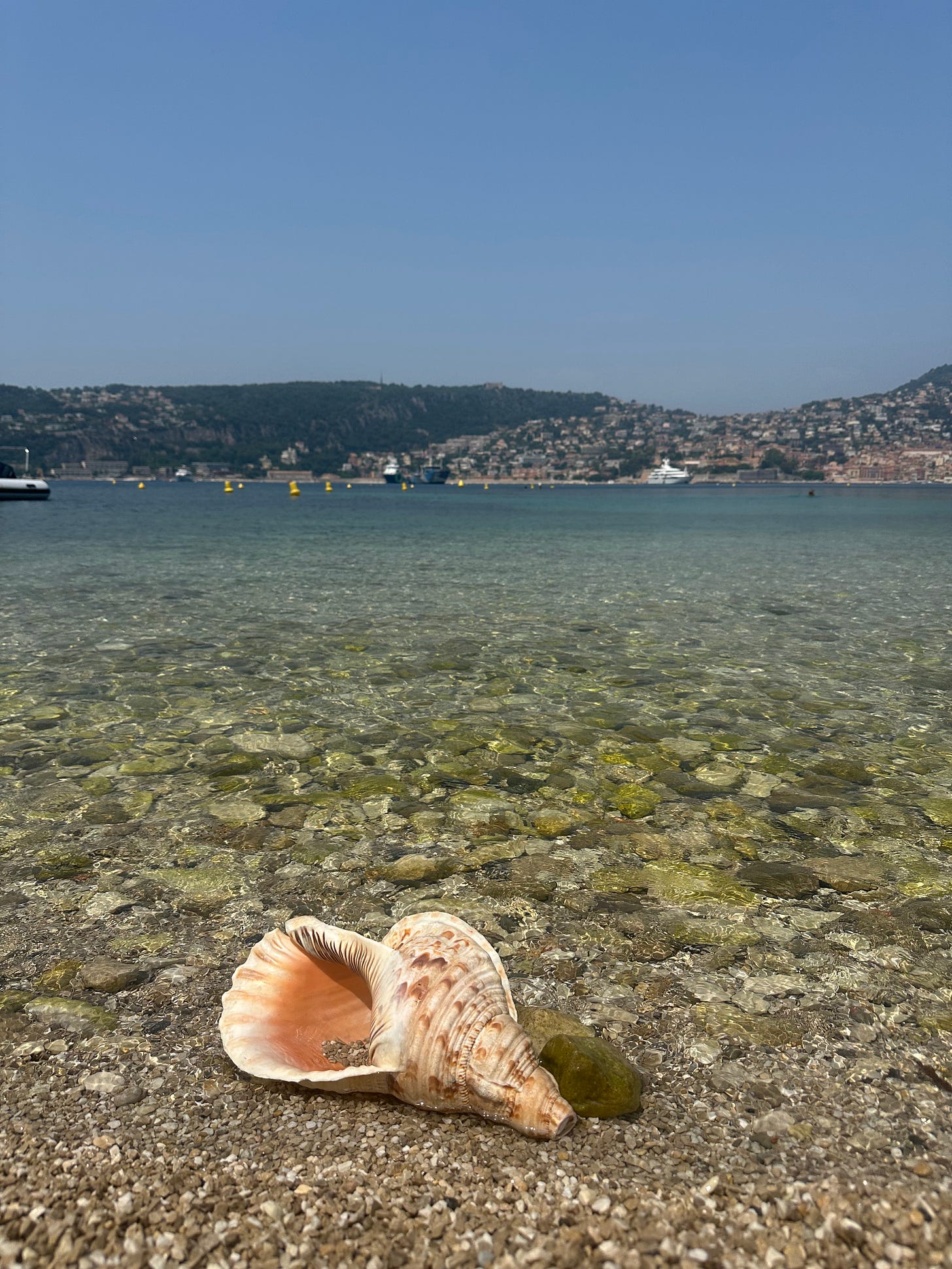Synthesising Sounds of the Sea
Uisge Beatha Album out today! UN Oceans Conference, OCEAN by Attenborough, Building a Sea Synthesizer, Grammar of Animacy, Robert MacFarlane, WHAIA, Scottish Islands, Sea Time...
“If we save our seas, we save our world” was the closing remark from David Attenborough in his recent OCEAN film. The film went into detail on the destruction of the Oceans that has taken place over many decades to the point of ecosystem collapse. It highlights bottom trawling, climate change, overfishing and pollution as being some of the main culprits, with governments and fishing communities unable to protect more than a mere 3% of the seas.
On a positive note, the film points to a solution: when marine areas are protected, sea life returns quickly. After a few years, fish, creel, coral, planktons and all other life that work in symbiosis spring back to life, providing us land dwellers with some absolute fundamentals for life on land: oxygen we breathe, carbon capture we make and plentiful fish stock for us to eat, not to mention providing an industry that serves billions of coastal communities.
I hadn’t realised that the release of ‘OCEAN’ was deliberately timed to influence policy makers into action at the UN Oceans Conference in Nice: the proposition is to protect 30% of our oceans by 2030. So far, 51 countries have signed the treaty (the aim was to get to 60 so the treaty could be put into action) and now there is an urgent need for them to follow through with convincing additional signatories and then enforcing the commitment.
The Sea Synth
I had recently worked with Whisky brand Port Ellen at the annual Feis festival on the Scottish Isle of Islay. During that performance I created a ‘sea synthesiser’ that took a realtime feed of the sea waves at the shore next to their distillery and used it to trigger sounds on my modular synthesiser. During Feis, I worked with two local musicians playing flute and acoustic guitar, who I asked to create a musician response to the sea’s music - working on ‘sea time’ by playing along to tides unique ebb and flow.
As I prepared for my trip to Islay, I was asked if I’d like to perform at the UN Oceans Conference (UNOC). Perfect timing - the Sea Synth had now found its perfect place - giving me an opportunity to sonify the natural beauty of the sea as a means of highlight the power of the Ocean in front of policy makers, indigenous leaders and environmentalists!
UN Oceans Conference
For the UNOC performances (we ended up doing three over two days), I collaborated with indigenous Māori musician WHAIA (pronounced ‘Fire’). She describes herself as a ‘sonic weaver’ and has a unique connection to the sea, with a long standing history as a key voice in this space, highlighting the need to listen to indigenous voices as we strive for a more balanced planet.
We didn’t have any rehearsal time, so the performances were completely improvised. I used various recordings of sea waves that I captured around the Eastern Atlantic coastline (mostly in Scotland but also Cape Verde and Norway), to provide the source material for the Sea Synth. The synth was able to capture envelope, amplitude, timbre and some pitch information to create a soundscape that played along in time to the sea. In some cases this was really rich in depth, at others more playful with the fizz and chops of more gentle waves creating a different sound than more forceful crashes and swells.
In his recent book ‘Is The River Alive?’, Rob MacFarlane regulalry points for the need for humans to create a ‘grammar of animacy’ - a proposal originally by Robin Kimmerer Waller in ‘Braiding Sweetgrass’, that highlights the inadequacy of the human language in interpreting natural phenomena. We can’t fully understand if water bodies are alive with such limited language. Both books are highly recommended…
Being on the Mediterranean sea, the water was very gentle at the conference itself - but I did a little live performance to highlight the process:
We also managed to record my live performance with WHAIA at Oceans House - listen here:
Brian d’Souza - UISGE BEATHA New Album of Sea Sounds from the Scottish Islands
Here is a bit of a surprise release. In preparation for these projects I made hours worth of recordings from various sea waves i have captured over the years. I thought I’d share some from the Scottish Islands in this brand new digital only album called Uisge Beatha. Here is some info:
Uisge Beatha is gaelic for 'Water Of Life'
Over a span of 6 years, Scottish sound artist Brian d'Souza travelled to various islands situated around the west of Scotland capturing the sound of the sea. He developed a customised Sea Synthesiser, which allowed sonic information such as envelope, amplitude and pitch from the waves to be translated into music.
The resulting album is an journey through 'sea time' - with every wave delivering a subtle yet distinct audio experience.
Brian's work focuses on the connection between the natural world and electronic music, seeking ways to listen better to nature's voice in order to co-exist with it in a more sustainable and respectful way.
This album is free with a paid subscription to A State Of Flo www.astateofflo.com
10% of the every purchase goes to Earth Percent charity.
Keep reading with a 7-day free trial
Subscribe to A State Of Flo to keep reading this post and get 7 days of free access to the full post archives.





